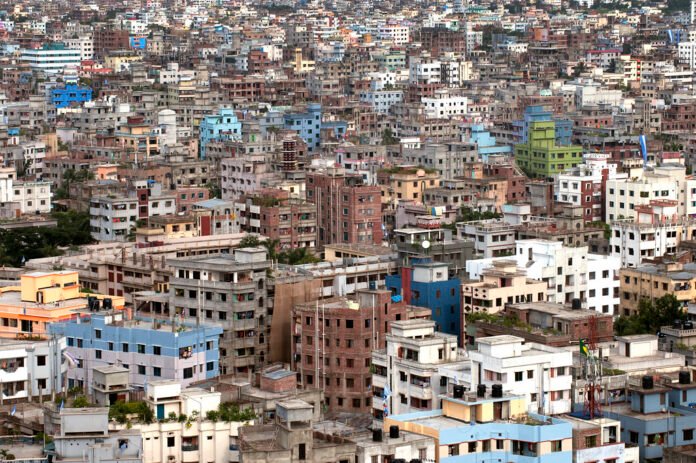China’s healthcare system relies on both public and private insurance. Public insurance is almost universal, covering most people. Private insurance is growing, mainly used to boost care access for urban residents, expatriates, and the wealthy.
Key Differences
- Eligibility & Enrollment
China’s public health insurance, primarily via Urban Employee Basic Medical Insurance (UEBMI) and Urban-Rural Resident Basic Medical Insurance (URRBMI), ensures coverage for almost all citizens and legal residents. UEBMI is compulsory for urban employees, whereas URRBMI is optional for rural and unemployed urban residents.
Private insurance is optional and open to anyone, including foreigners, businesses, and locals seeking extra coverage. - Funding Sources
Public health insurance is largely funded by payroll contributions, government subsidies, and individual premiums. For UEBMI, employers typically contribute about 6% of an employee’s salary, and employees pay about 2%.
Private insurance, on the other hand, is funded entirely through direct premiums paid by individuals or corporations, without government support. - Coverage Scope
Public insurance provides essential healthcare, covering hospital stays, doctor visits, medications, traditional Chinese medicine, and some mental health care. Yet, limits on reimbursement, deductibles, and co-pays are in place. Private insurance offers extensive coverage: top-tier hospital access, global treatments, specialist visits, dental care, maternity benefits, and international medical evacuation. - Healthcare Provider Access
Public insurance mainly covers treatment at government hospitals and clinics, with restricted access to private ones.
Private insurance grants access to elite private hospitals, global clinics, and international medical networks. Providers such as Cigna, Allianz, and Ping An offer plans with direct billing and multilingual assistance. - Cost & Financial Protection
Public insurance is cheaper, with lower premiums but higher personal costs because of limited reimbursements.
Private insurance costs more but provides higher benefits and can cover all medical expenses, depending on the plan.
Key Similarities
- Financial Risk Protection
Both systems strive to lessen healthcare costs. Public systems provide subsidized care, while private systems offer comprehensive coverage. Both protect against overwhelming health expenses. - Complementary Role
Public and private insurance systems often work together. Many people use public insurance for basic coverage and add private insurance for specialized or international care. - Regulation and Oversight
China’s public and private insurers follow national regulations to ensure quality, transparency, and consumer protection.
Top Public Health Insurance Schemes in China: Coverage, Cost, and Consumer Insights
China boasts a vast public health insurance system, covering over 95% of its citizens. It includes major programs for urban workers, rural residents, and the unemployed. These government-run schemes provide essential healthcare with partial reimbursement, low premiums, and broad coverage.
1. Urban Employee Basic Medical Insurance (UEBMI)
- Eligibility:
Mandatory for all formally employed urban workers, including both Chinese citizens and some legal foreign residents. - Available Services/Coverage Features:
- Inpatient and outpatient care
- Prescription medication
- Preventive services and specialist consultations
- Traditional Chinese Medicine (TCM)
- Mental health services in designated hospitals
- Inpatient and outpatient care
- Cost:
Funded via payroll taxes: typically 6% of the employee’s salary is contributed by the employer, and 2% by the employee. - Core Financial Features:
- High reimbursement rates (50–85%) in public hospitals
- Annual reimbursement ceilings apply
- Individual health savings accounts for outpatient services
- Low annual deductibles
- High reimbursement rates (50–85%) in public hospitals
- Open for All or Limited:
Limited to formal urban employees and participating employers. - Consumer Satisfaction Score:
Estimated at 80%. Users appreciate the affordability and reliability but report limitations in accessing private hospitals and high-end care.
2. Urban-Rural Resident Basic Medical Insurance (URRBMI)
- Eligibility:
Voluntary enrollment for non-working urban residents, rural populations, students, children, and the elderly. - Available Services/Coverage Features:
- Inpatient hospitalization
- Outpatient care in designated clinics
- Drug coverage
- TCM and basic preventive services
- Inpatient hospitalization
- Cost:
- Annual premiums are low—approximately RMB 320–350 per person/year
- Heavily subsidized by the central and local governments
- Annual premiums are low—approximately RMB 320–350 per person/year
- Core Financial Features:
- Government subsidies cover up to 70–80% of total costs
- Higher reimbursement in county-level facilities than city hospitals
- Co-payment and ceiling limits still apply
- Government subsidies cover up to 70–80% of total costs
- Open for All or Limited:
Open to all residents not covered under UEBMI - Consumer Satisfaction Score:
Around 75–78%. Valued for broad inclusion and affordability, though patients often face long wait times and limited advanced care options.
3. New Rural Cooperative Medical Scheme (NRCMS) (now merged into URRBMI)
- Eligibility:
Initially targeted rural residents, now functionally merged into URRBMI post-2016. - Available Services/Coverage Features:
- Primarily focused on basic and inpatient rural healthcare
- Local clinic visits and village health services
- Partial outpatient reimbursement
- Primarily focused on basic and inpatient rural healthcare
- Cost:
- Premiums were symbolic (~RMB 50–100 annually), with majority funding from government
- Premiums were symbolic (~RMB 50–100 annually), with majority funding from government
- Core Financial Features:
- High government subsidy ratio
- Emphasis on regional coverage within local hospitals and township clinics
- High government subsidy ratio
- Open for All or Limited:
Targeted rural access, now unified under URRBMI - Consumer Satisfaction Score:
Historically rated around 70–75%, especially praised in rural areas for improving healthcare accessibility.
4. Basic Medical Insurance (BMI) System (Framework Category)
- Eligibility:
Covers both UEBMI and URRBMI schemes under a unified policy structure - Available Services/Coverage Features:
- National formulary drug list
- Basic hospitalization and outpatient services
- Catastrophic health coverage for critical illnesses
- National formulary drug list
- Cost:
Depends on the underlying scheme (UEBMI or URRBMI) - Core Financial Features:
- Streamlined administration across regions
- Unified reimbursement rules being developed
- Streamlined administration across regions
- Open for All or Limited:
Integrated structure meant to provide universal coverage - Consumer Satisfaction Score:
Broad framework score around 77–80%, as reforms aim to bridge urban-rural disparities.
5. State-Owned Hospital Network
- Note: While not an insurer, the state hospital system is the main provider for publicly insured patients.
- Role:
- Over 90% of patients use state-run hospitals under public insurance
- Services include primary to tertiary care, emergency services, surgeries, maternity care, and more
- Over 90% of patients use state-run hospitals under public insurance
- Funding:
Publicly funded and reimbursed under UEBMI and URRBMI frameworks - Consumer Satisfaction Score:
Variable, but typically 70–75%, with positive views on cost but criticism for overcrowding and variable service quality.
Top Private Health Insurance Providers in China: Coverage, Costs, and Consumer Ratings
China’s public health insurance covers most people, but private insurance is gaining traction among city dwellers, the wealthy, and expatriates. These plans offer broader coverage, access to private and international hospitals, and higher reimbursement limits. Let’s explore the top five private health insurance providers in China, focusing on their services, costs, eligibility, and customer satisfaction.
1. Ping An Insurance(Official Website: https://www.pingan.com/)
- Eligibility:
Open to Chinese citizens and foreign residents; available for individuals, families, and corporate groups. - Available Services/Coverage Features:
- Inpatient and outpatient treatment
- Critical illness coverage
- Dental and vision options
- Maternity and wellness packages
- TCM and preventive screenings
- Inpatient and outpatient treatment
- Cost:
Premiums start at around RMB 2,000–10,000/year depending on age, coverage, and optional riders. - Core Financial Features:
- High annual benefit limits (up to RMB 1 million+)
- Cashless settlement in partner hospitals
- Tiered plans for different budgets
- High annual benefit limits (up to RMB 1 million+)
- Consumer Satisfaction Score:
Approx. 85%, praised for its wide hospital network, digital claim process, and affordability for middle-income users.
2. China Life Insurance(Official Website: http://www.chinalife.com.cn/)
- Eligibility:
Open to all Chinese nationals and legal residents. - Available Services/Coverage Features:
- General health, accident, and critical illness insurance
- Child-specific and elderly plans
- Bundled with life insurance options
- In-home care and recovery services for some plans
- General health, accident, and critical illness insurance
- Cost:
Entry-level health policies begin at RMB 1,000–3,000/year, with premium packages reaching RMB 15,000+. - Core Financial Features:
- Nationwide hospital network access
- Reimbursement-based system
- Integration with public insurance for supplemental benefits
- Nationwide hospital network access
- Consumer Satisfaction Score:
Around 80%, well-regarded for brand trust, affordability, and family-focused plans.
3. People’s Insurance Company of China (PICC)(Official Website: http://www.picc.com/)
- Eligibility:
Open to individuals and groups nationwide, including SMEs. - Available Services/Coverage Features:
- Comprehensive medical, accident, and maternity coverage
- Optional riders for serious disease and high-cost treatment
- Telemedicine services in selected plans
- Comprehensive medical, accident, and maternity coverage
- Cost:
Annual premiums range from RMB 2,500–8,000, depending on demographic and plan type. - Core Financial Features:
- Flexible deductibles and co-payment options
- Good integration with public schemes for gap coverage
- Health management tools and support hotlines
- Flexible deductibles and co-payment options
- Consumer Satisfaction Score:
Estimated at 78%, valued for accessibility, corporate support, and reliability, though claim times may vary.
4. Cigna Global(Official Website: https://www.cignaglobal.com/)
- Eligibility:
Primarily aimed at expats and high-income Chinese nationals looking for international or high-tier private care. - Available Services/Coverage Features:
- Global coverage including inpatient, outpatient, maternity, dental, and mental health
- Emergency evacuation and international referrals
- Direct billing with top private hospitals in China
- Global coverage including inpatient, outpatient, maternity, dental, and mental health
- Cost:
Premiums typically range from USD 1,500–6,000/year, based on age, region, and coverage level. - Core Financial Features:
- No claims bonus and multi-region portability
- 24/7 multilingual assistance
- No referral needed for specialists
- No claims bonus and multi-region portability
- Consumer Satisfaction Score:
Around 90%, known for customer service, international coverage, and ease of claims.
5. Allianz Care China(Official Website: https://www.allianzcare.com/en.html)
- Eligibility:
Open to expats and upper-income locals seeking international-standard care. - Available Services/Coverage Features:
- Hospitalization, chronic disease management, outpatient visits
- Maternity, wellness, preventive care
- Second medical opinions and virtual health consultations
- Hospitalization, chronic disease management, outpatient visits
- Cost:
Premiums vary from USD 2,000–7,000/year depending on benefits and deductible levels. - Core Financial Features:
- High global benefit limits (up to USD 1.5 million/year)
- Customizable modular plans
- Direct settlement in China and abroad
- High global benefit limits (up to USD 1.5 million/year)
- Consumer Satisfaction Score:
Around 88%, highly rated for flexibility, quality of service, and global reputation.
READ MORE: Private and public health insurance of Myanmar (Make informed choices)


